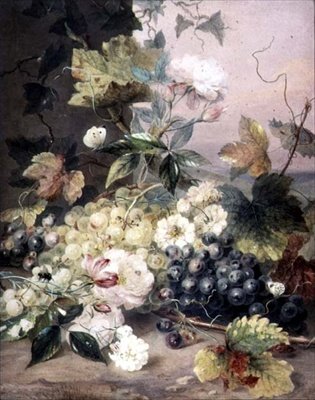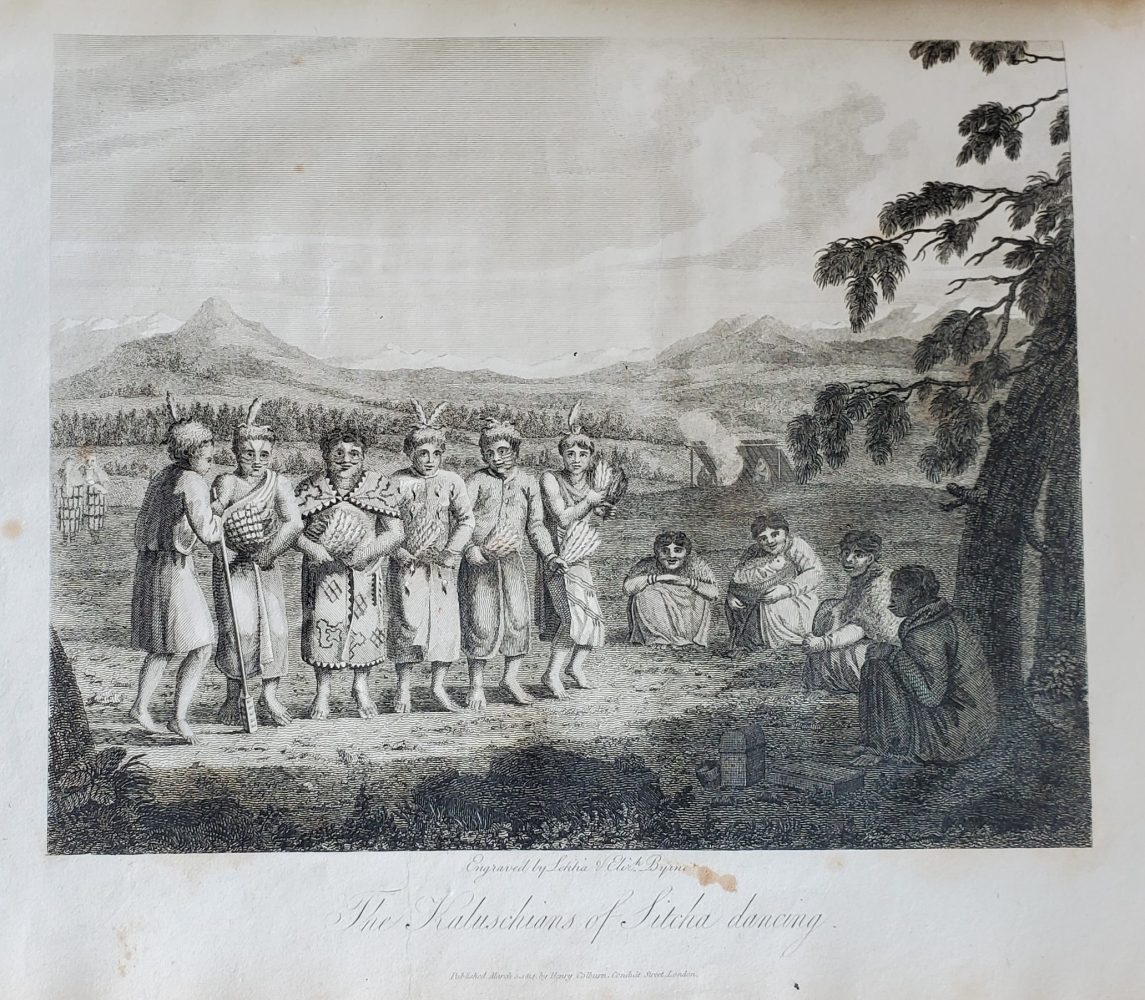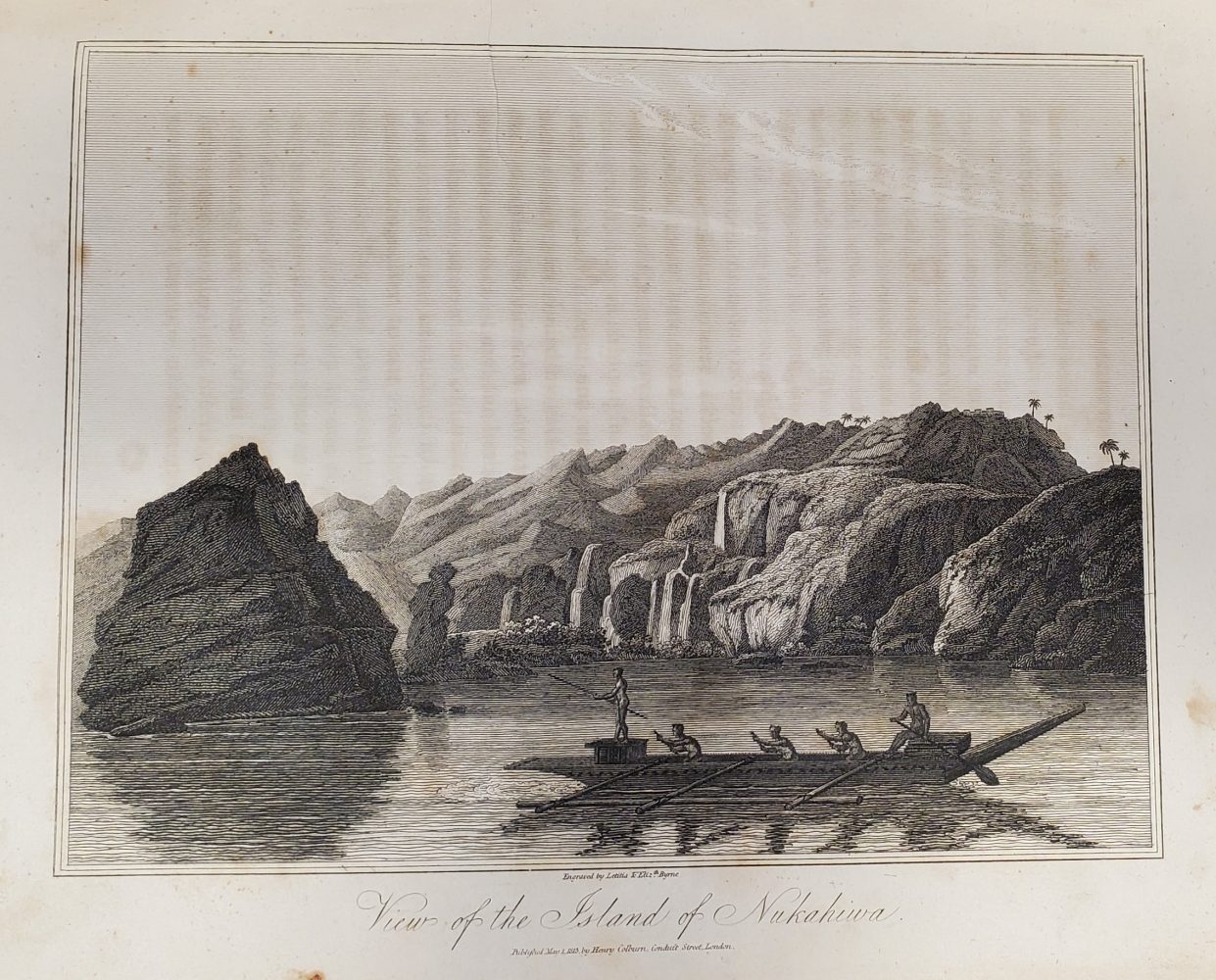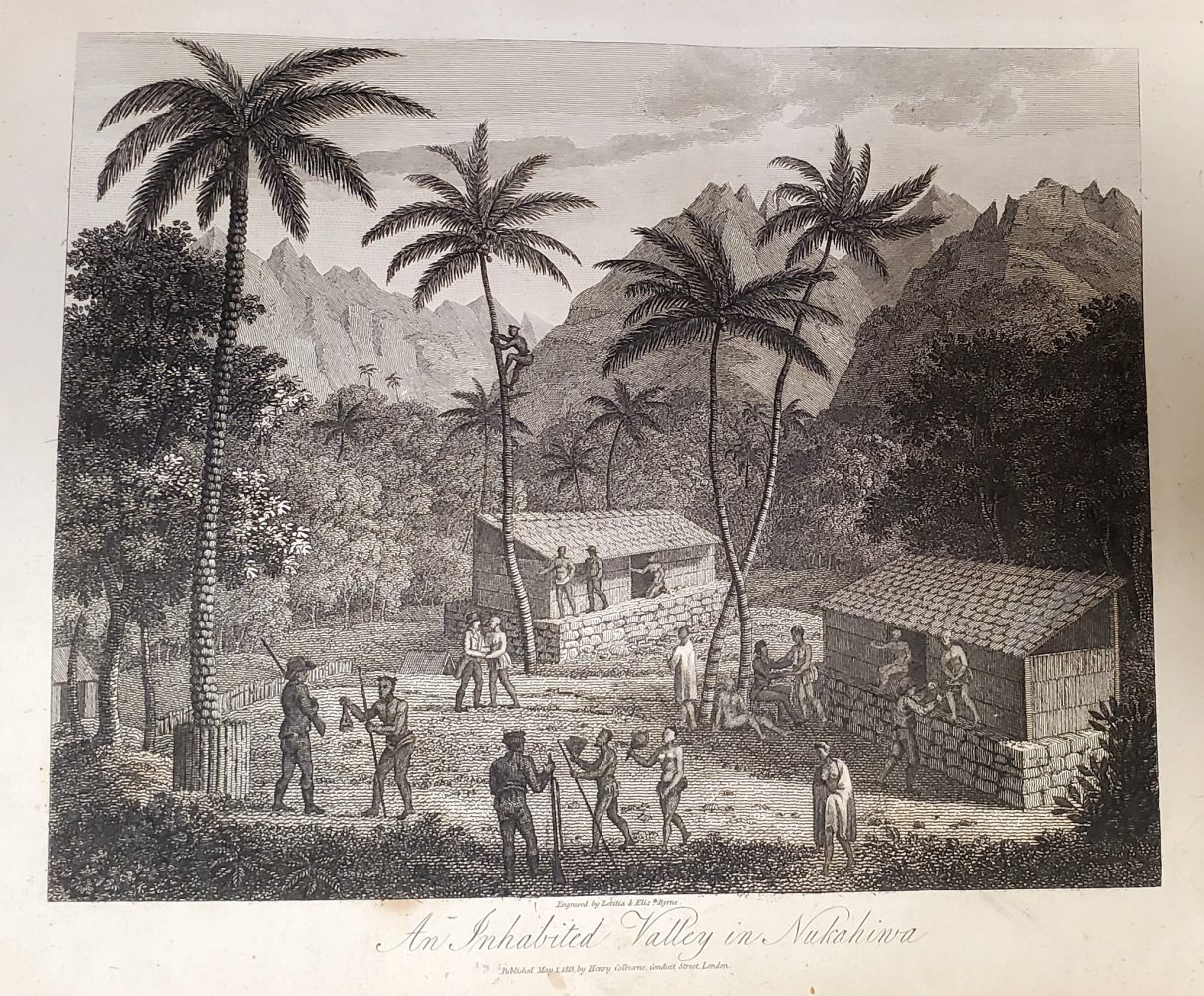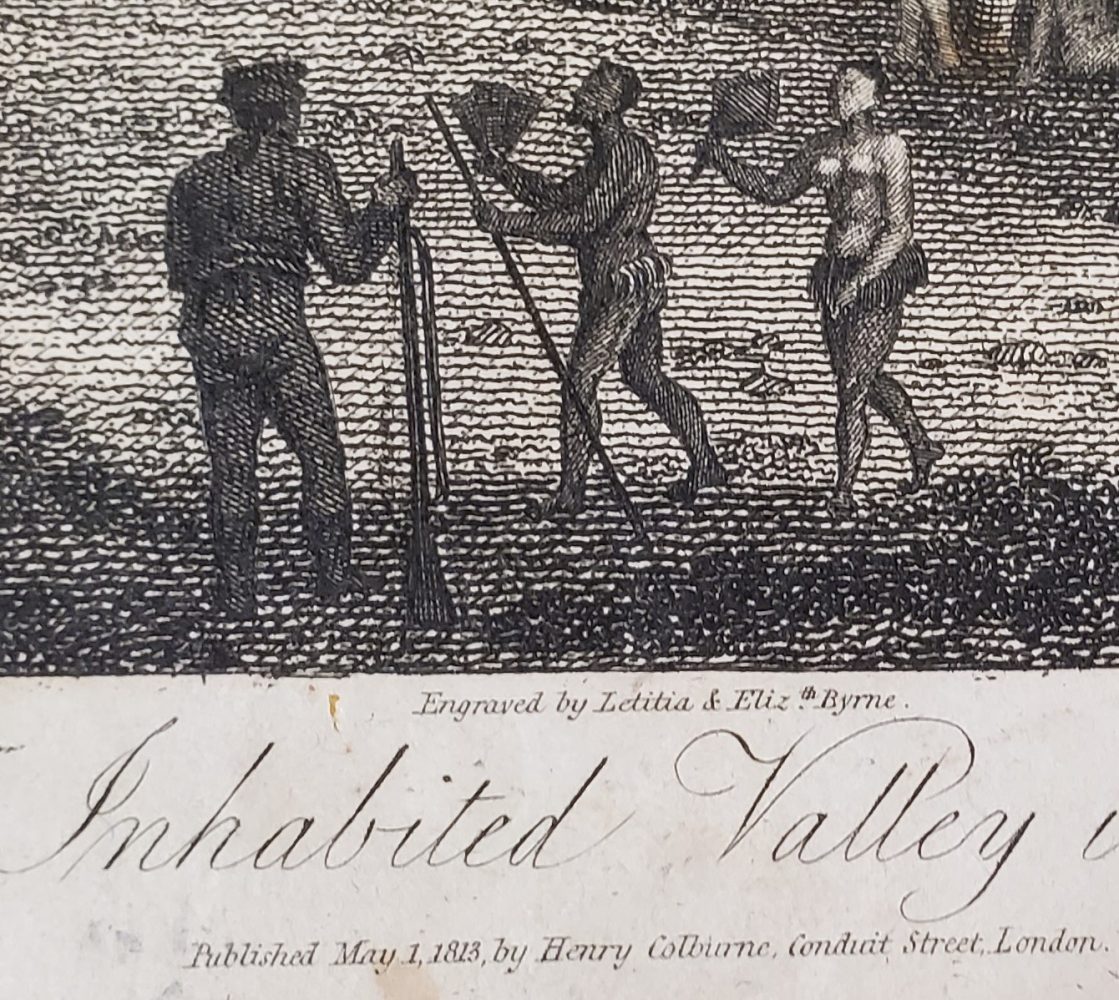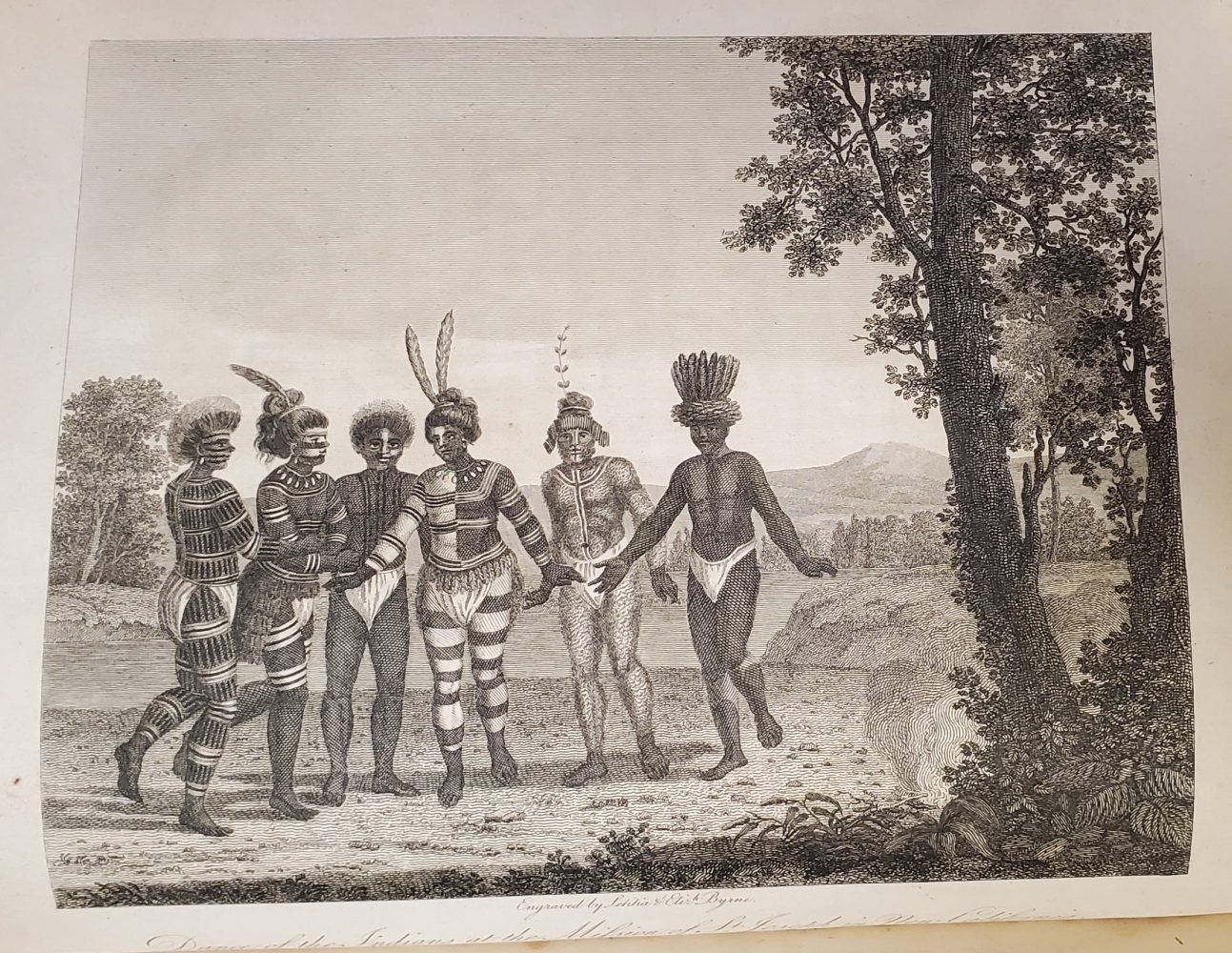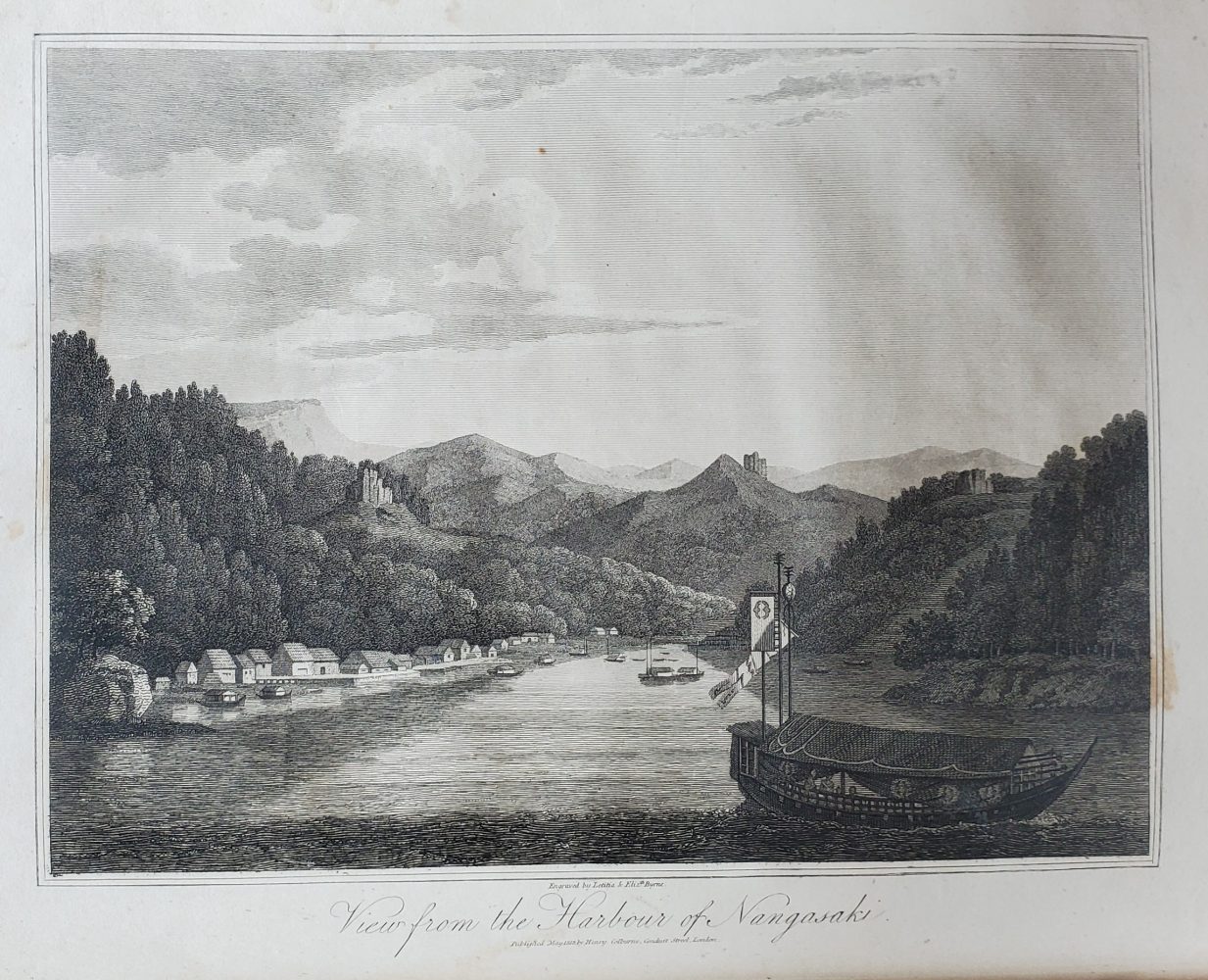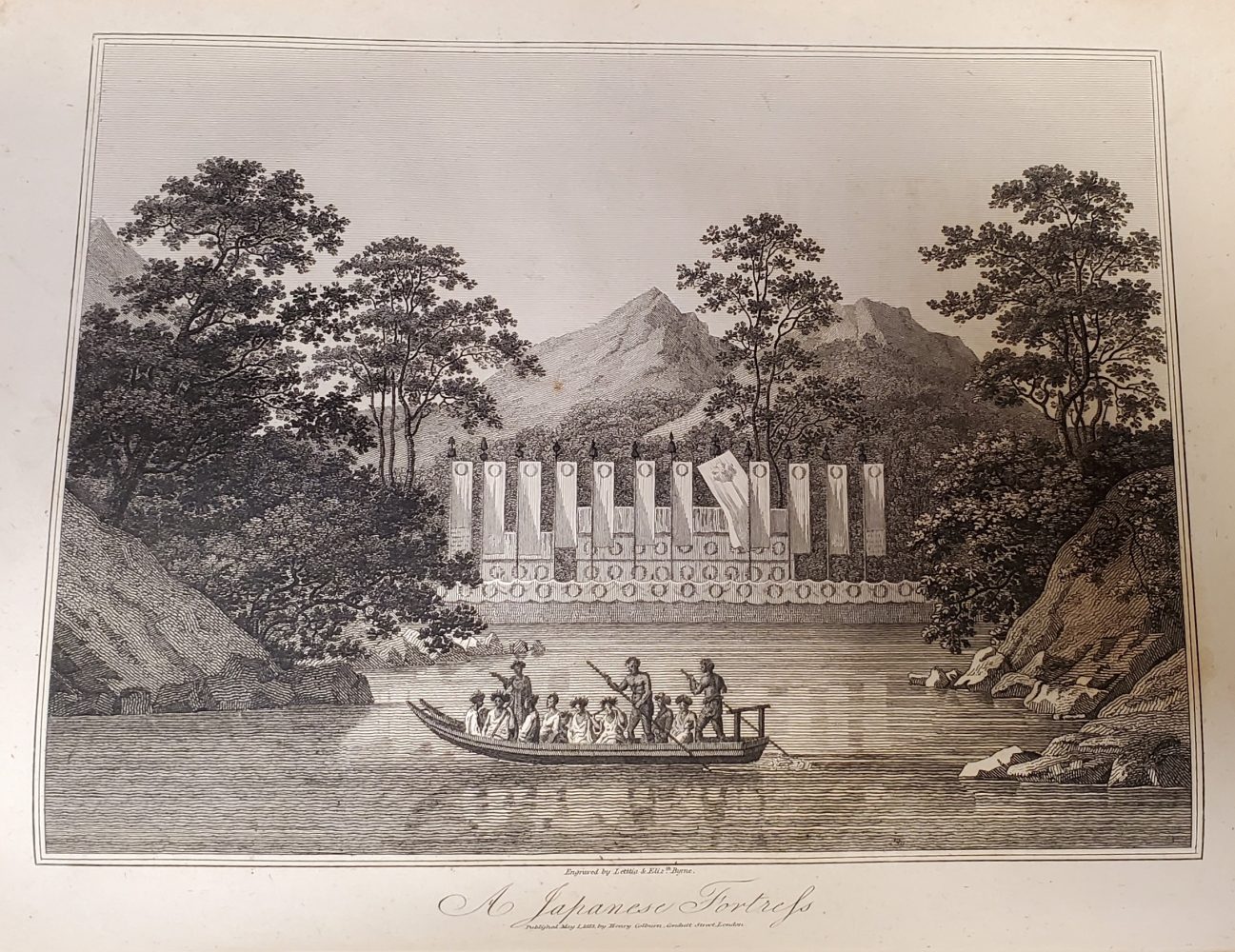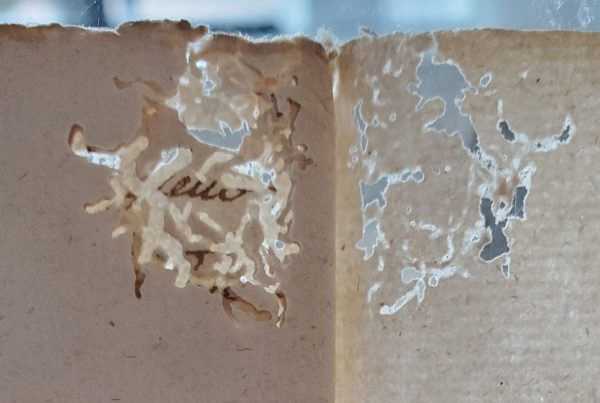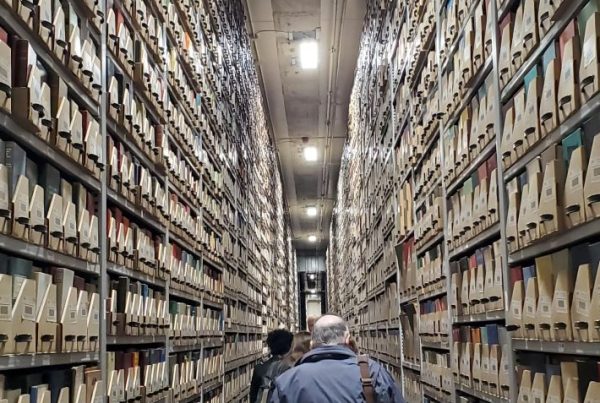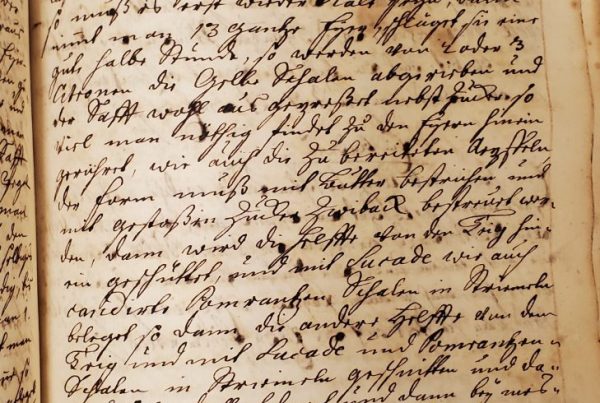Anne Frances (1775-1837), Mary (1776-1847), Letitia (1779-1849), and Elizabeth (fl. 1809-1849) Byrne were sisters and artists. There isn’t a record of their mother’s name – or, it hasn’t yet been found – but their father was William Byrne (1743-1805), a talented artist and engraver, who also ran a successful engraving workshop. There was a younger brother too, John (1786-1847), also trained as an artist, who inherited the family business after the father’s unexpected death in 1805.
Just a little is known about each of these women. They were clearly quite remarkable individually, and it is fascinating to consider them as a powerhouse family of artists. They all learned the art and techniques of engraving and etching from their father and collaborated in the family business. Each of them had their own specialties as well.
Anne Frances became a watercolor painter, specializing in flowers, fruits, birds, and insects. She was the first woman to be elected as an Associate Exhibitor of the Society of Painters in Water Colours in 1806 and later became a full member. Mary became a painter of miniatures, particularly portraits, and had a career that stretched over 50 years. She was the only one of the siblings to marry (to another miniaturist, John Green) and her son, Benjamin Richard Green, also became an artist and author.
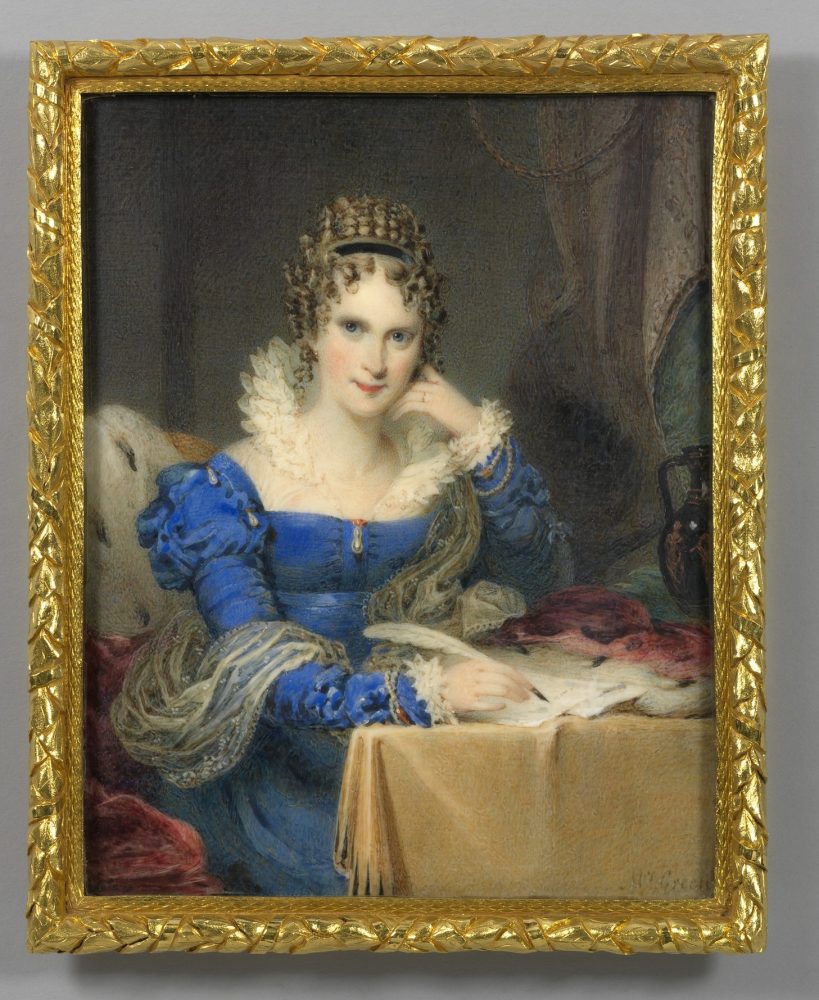
Queen Adelaide (1792 – 1849), wife of William IV of England, painted by Mary Byrne. This miniature portrait, part of the Royal Collection Trust, is just 13.2 x 10 centimeters large.
The sisters most pertinent to the Bell collection are Letitia and Elizabeth. Both were superb etchers and engravers. As a young woman in her 20s, Letitia was already invited to exhibit her landscapes at the Royal Academy. She illustrated volumes about Tunbridge Wells (1810) and Winchester (1813) and continued to exhibit her art till the year before she died. The youngest sister (although even this is not certain), Elizabeth, was also an engraver and a water color painter, who seems to have focused on landscapes as well. However, there is almost no information readily available about her. She lived with her brother John, and in the brief write-ups about their lives that one can find, she is always subsumed into his.
This subsummation seems emblematic of the lives of so many women in the early modern era. I wouldn’t have known about the Byrne family at all if I hadn’t been working on a project to surface women in the Bell collection. Together with our rare books cataloger extraordinaire, kalan Knudson Davis, I created a “featured collection” that links the records of women and makes them easier to find. In the early days of cataloging the collection, for a variety of reasons, women were seldom highlighted. In other words, for example, the subject headings “women,” “women and travel,” or “women – religious,” “women – artists,” etc., were seldom used. Therefore, it is difficult to find women, unless one knows specifically for whom to look. In order to create the featured collection, I did several keyword catalogue searches, looking for the typical valences of women’s identities in a variety of languages – such as: wife, widow, mother, queen, nun, etc. Finally, I also searched for traditional women’s names, and that is when I discovered Elizabeth Byrne.

The lower edge of an engraving of Nagasaki Harbor, showing the names Letitia and Elizabeth Byrne. From Georg Heinrich von Langsdorff, Voyages and travels in various parts of the world, during the years 1803, 1804, 1805, 1806, and 1807, vol. 1 (London: 1813-1814). Bell Call # 1813 La
Letitia and Elizabeth Byrne are listed in the Bell catalogue as artist/engravers for the travelogue of Georg Heinrich von Langsdorff: Voyages and travels in various parts of the world, during the years 1803, 1804, 1805, 1806, and 1807, 2 vols. (London: 1813-1814); Bell Call # 1813 La. Their names are found on four of the thirteen plates in volume one, and three of the five plates in volume two. In the second volume, one of their works of art is also the frontispiece. The illustrations include land- and waterscapes as well as depictions of people. Of course, these women did not travel anywhere that Von Langsdorff did; most likely they never traveled beyond the British Isles. Their engravings are based on the work of artists who accompanied this first Russian circumnavigation of the globe. (Von Langsdorff was the naturalist and physician of the expedition under Adam Johann von Krusenstern.)
- The frontispiece of volume two of Georg Heinrich von Langsdorff, Voyages and travels in various parts of the world, during the years 1803, 1804, 1805, 1806, and 1807, 2 vols. (London: 1813-1814): “View of the Russian settlement at Oonalashka.”
- “The Kaluschians of Sitcha dancing.” (Sitcha was an island off the coast of what we call Alaska, in the North Pacific.)
- “View of the Island of Nukahiwa.” (Nukahiwa, now Nuku Hiva, is the largest of the Marquesas Islands of French Polynesia.)
- “An inhabited valley in Nukahiwa.” The scene, which seems to show exchange of goods as well as European men and island women in rather intimate poses, is an unusual choice for women who usually specialized in landscapes.
- Close-up showing three figures and the names of Elizabeth and Letitia Byrne.
- “Dance of the Indians at the Mission of St. Joseph in New California.” (New California was a province of the Spanish Viceroyalty of New Spain from 1804 to 1821; north of the Baja peninsula.)
- “View from the harbour of Nangasaki”
- “A Japanese fortress.”
The featured collection “Women in the James Ford Bell Library” is a work in progress, as we continue to discover women in the collection and acquire new works by and about women. I am hopeful that both this research aid and this blog post, may inspire more research on some of these remarkable and yet little known women.
The Byrne siblings worked together in London throughout their lives, and all of them were buried in Kensal Green Cemetery, though their father was buried elsewhere.
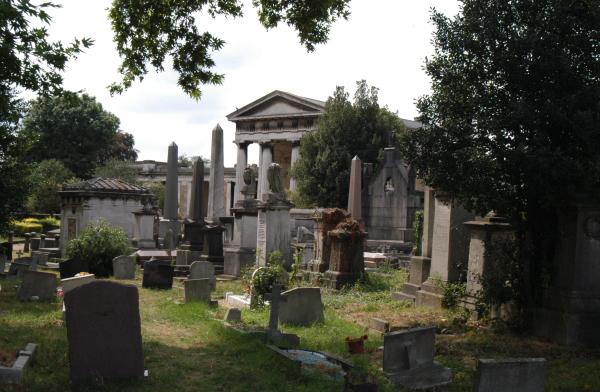
Kensal Green Cemetery, London, the final resting place of authors, artists, poets, politicians, and others.
One final note regarding their father, William Byrne. He was one of the engravers of the famous image of the “Death of Captain Cook.” The original painting was done by John Webber, artist on the third voyage. It was engraved by Byrne and Francesco Bartolozzi – with Byrne the expert in landscape and Bartolozzi the engraver of figures. It was first published as a separate print in 1784.
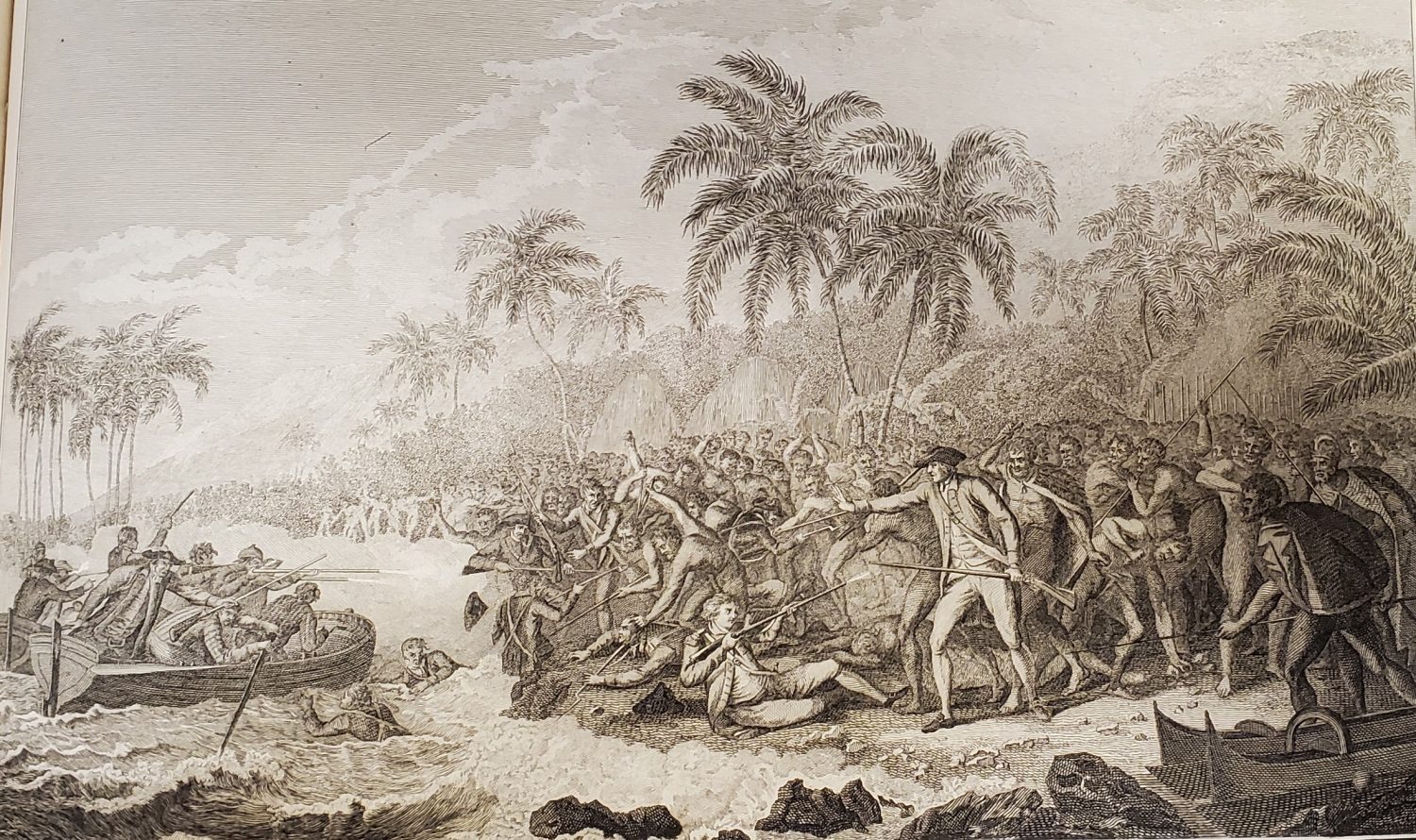
“The Death of Captain Cook,” from A voyage to the Pacific Ocean undertaken by the command of His Majesty for making discoveries in the northern hemisphere, vol. I and II written by Captain James Cook, F.R.S. ; vol. III by Captain James King (London, 1785). Bell Call # 1785 oCook
Some basic sources on the Byrne family:
Oxford Dictionary of National Biography: “Byrne Family”
Sara Gray, Dictionary of British Women Artists (Lutterworth Press, 2009).


